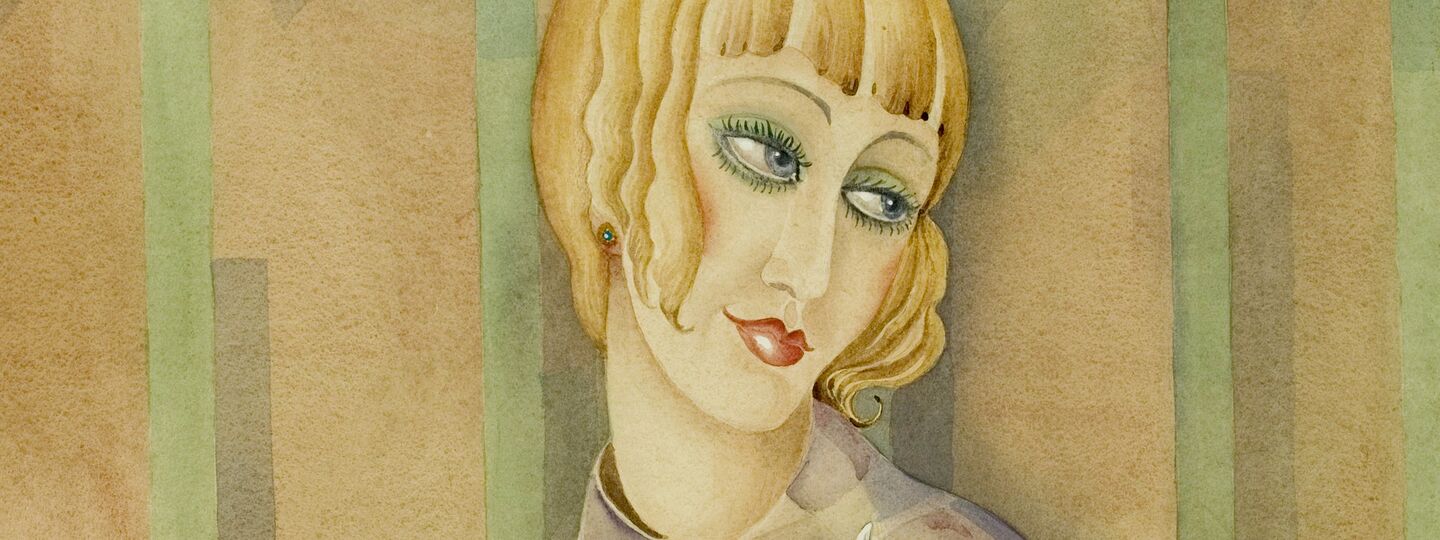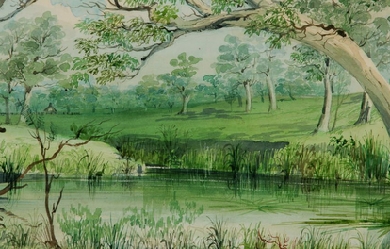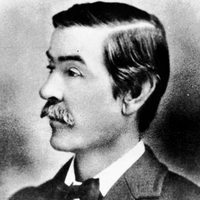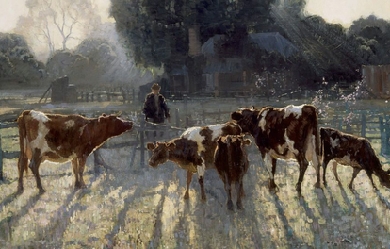
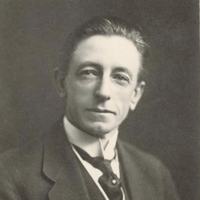
Clarence Michael James Stanislaus Dennis, better kn (own as C. J. Dennis, (7 September 1876– 22 June 1938) was an Australian poet known for his humorous poems, especially “The Songs of a Sentimental Bloke”, published in the early 20th century. Though Dennis’s work is less well known today, his 1916 publication of The Sentimental Bloke sold 65,000 copies in its first year, and by 1917 he was the most prosperous poet in Australian history. Together with Banjo Paterson and Henry Lawson, both of whom he collaborated with, he is often considered among Australia’s three most famous poets. When he died at the age of 61, the Prime Minister of Australia Joseph Lyons suggested he was destined to be remembered as the “Australian Robert Burns”. Biography C. J. Dennis was born in Auburn, South Australia. His father owned hotels in Auburn, and then later in Gladstone and Laura. His mother suffered ill health, so Clarrie (as he was known) was raised initially by his great-aunts, then went away to school, Christian Brothers College, Adelaide as a teenager. At the age of 19 he was employed as a solicitor’s clerk. It was while he was working in this job that, like banker’s clerk Banjo Paterson before him, his first poem was published under the pseudonym “The Best of the Six”. He later went on to publish in The Worker, under his own name, and as “Den”, and in The Bulletin. His collected poetry was published by Angus & Robertson. He joined the literary staff of The Critic in 1897, and after a spell doing odd jobs around Broken Hill, returned to The Critic, serving for a time c. 1904 as editor, to be succeeded by Conrad Eitel. He founded a short-lived literary paper The Gadfly. From 1922 he served as staff poet on the Melbourne Herald. C. J. Dennis is buried in Box Hill Cemetery, Melbourne. The Box Hill Historical Society has attached a commemorative plaque to the gravestone. Dennis is also commemorated with a plaque on Circular Quay in Sydney which forms part of the NSW Ministry for the Arts - Writers Walk series, and by a bust outside the town hall of the town of Laura. Books * Backblock Ballads and Other Verses (1913) * The Songs of a Sentimental Bloke (1915) * The Moods of Ginger Mick (1916) * The Glugs of Gosh (1917) * Doreen (1917) * Digger Smith (1918) * Backblock Ballads and Later Verses (1918) * Jim of the Hills (1919) * A Book for Kids (1921) (reissued as Roundabout, 1935) * Rose of Spadgers (1924) * The Singing Garden (1935) Shorter poems of note “The Austra-laise” (1908) Many shorter works were also published in a wide variety of Australian newspapers and magazines. References Wikipedia—https://en.wikipedia.org/wiki/C._J._Dennis
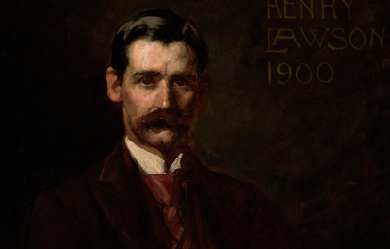
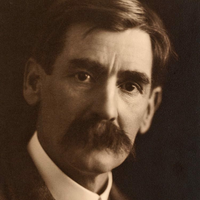
Henry Archibald Hertzberg Lawson (17 June 1867 – 2 September 1922) was an Australian writer and poet. Along with his contemporary Banjo Paterson, Lawson is among the best-known Australian poets and fiction writers of the colonial period and is often called Australia's “greatest short story writer”. He was the son of the poet, publisher and feminist Louisa Lawson.
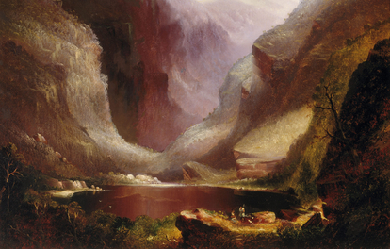
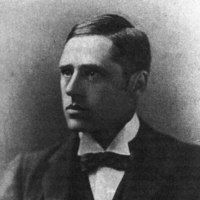
Andrew Barton “Banjo” Paterson, CBE (17 February 1864– 5 February 1941) was an Australian bush poet, journalist and author. He wrote many ballads and poems about Australian life, focusing particularly on the rural and outback areas, including the district around Binalong, New South Wales, where he spent much of his childhood. Paterson’s more notable poems include “Waltzing Matilda”, “The Man from Snowy River” and “Clancy of the Overflow”.
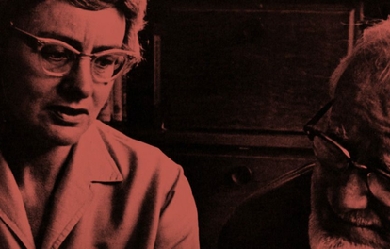
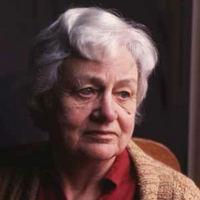
Judith Arundell Wright (31 May 1915– 25 June 2000) was an Australian poet, environmentalist and campaigner for Aboriginal land rights. Biography Judith Wright was born in Armidale, New South Wales. The eldest child of Phillip Wright and his first wife, Ethel, she spent most of her formative years in Brisbane and Sydney. Wright was of Cornish ancestry. After the early death of her mother, she lived with her aunt and then boarded at New England Girls’ School after her father’s remarriage in 1929. After graduating, Wright studied Philosophy, English, Psychology and History at the University of Sydney. At the beginning of World War II, she returned to her father’s station to help during the shortage of labour caused by the war. Wright’s first book of poetry, The Moving Image, was published in 1946 while she was working at the University of Queensland as a research officer. Then, she also worked with Clem Christesen on the literary magazine Meanjin. In 1950 she moved to Mount Tamborine, Queensland, with the novelist and abstract philosopher Jack McKinney. Their daughter Meredith was born in the same year. They married in 1962, but Jack was to live only until 1966. In 1966, she published The Nature of Love, her first collection of short stories, through Sun Press, Melbourne. Set mainly in Queensland, they include 'The Vineyard Woman’, 'Eighty Acres’, 'The Dugong’, 'The Weeping Fig’ and 'The Nature of Love’, all first published in The Bulletin. With David Fleay, Kathleen McArthur and Brian Clouston, Wright was a founding member and, from 1964 to 1976, President, of the Wildlife Preservation Society of Queensland. She was the second Australian to receive the Queen’s Gold Medal for Poetry, in 1991. For the last three decades of her life, she lived near the New South Wales town of Braidwood. Allegedly, she had moved to the Braidwood area to be closer to H. C. Coombs, who was based in Canberra. She started to lose her hearing in her mid-20s, and she became completely deaf by 1992. Judith Wright died in Canberra on 25 June 2000, aged 85. Poet and critic Judith Wright was the author of several collections of poetry, including The Moving Image, Woman to Man, The Gateway, The Two Fires, Birds, The Other Half, Magpies, Shadow, Hunting Snake, among others. Her work is noted for a keen focus on the Australian environment, which began to gain prominence in Australian art in the years following World War II. She deals with the relationship between settlers, Indigenous Australians and the bush, among other themes. Wright’s aesthetic centres on the relationship between mankind and the environment, which she views as the catalyst for poetic creation. Her images characteristically draw from the Australian flora and fauna, yet contain a mythic substrata that probes at the poetic process, limitations of language, and the correspondence between inner existence and objective reality. Her poems have been translated into several languages, including Italian, Japanese and Russian. Birds In 2003, the National Library of Australia published an expanded edition of Wright’s collection titled Birds. Most of these poems were written in the 1950s when she was living on Tamborine Mountain in southeast Queensland. Meredith McKinney, Wright’s daughter, writes that they were written at “a precious and dearly-won time of warmth and bounty to counterbalance at last what felt, in contrast, the chilly dearth and difficulty of her earlier years”. McKinney goes on to say that “many of these poems have a newly relaxed, almost conversational tone and rhythm, an often humorous ease and an intimacy of voice that surely reflects the new intimacies and joys of her life”. Despite the joy reflected in the poems, however, they also acknowledge "the experiences of cruelty, pain and death that are inseparable from the lives of birds as of humans... and [turn] a sorrowing a clear-sighted gaze on the terrible damage we have done and continue to do to our world, even as we love it". Environmentalist and social activist Wright was well known for her campaigning in support of the conservation of the Great Barrier Reef and Fraser Island. With some friends, she helped found one of the earliest nature conservation movements. Wright was also an impassioned advocate for the Aboriginal land rights movement. Tom Shapcott, reviewing With Love and Fury, her posthumous collection of selected letters published in 2007, comments that her letter on this topic to the Australian Prime Minister John Howard was “almost brutal in its scorn”. Shortly before her death, she attended a march in Canberra for reconciliation between non-indigenous Australians and the Aboriginal people. Awards * 1976 - Christopher Brennan Award * 1991 - Queen’s Gold Medal for Poetry * 1994 - Human Rights and Equal Opportunity Commission Poetry Award for Collected Poems Recognition * In June 2006 the Australian Electoral Commission (AEC) announced that the new federal electorate in Queensland, which was to be created at the 2007 federal election, would be named Wright in honor of her accomplishments as a “poet and in the areas of arts, conservation and indigenous affairs in Queensland and Australia”. However, in September 2006 the AEC announced it would name the seat after John Flynn, the founder of the Royal Flying Doctor Service, due to numerous objections from people fearing the name Wright may be linked to disgraced former Queensland Labor MP Keith Wright. Under the 2009 redistribution of Queensland, a new seat in southeast Queensland was created and named in Wright’s honour; it was first contested in 2010. * The Judith Wright Centre of Contemporary Arts in Fortitude Valley, Brisbane is named after her. * On 2 January 2008, it was announced that a future suburb in the district of Molonglo Valley, Canberra would be named “Wright”. There is a street in the Canberra suburb of Franklin named after her, as well. Another of the Molonglo Valley suburbs is to be named after Wright’s lover, “Nugget” Coombs.
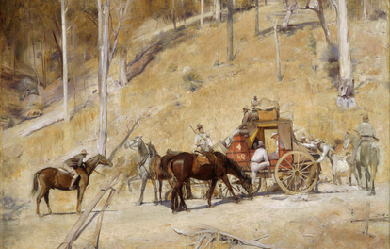
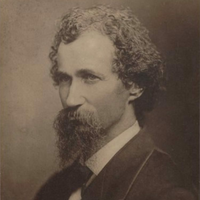
Thomas Henry Kendall (18 April 1839– 1 August 1882) was a nineteenth-century Australian author and bush poet, who was particularly known for his poems and tales set in a natural environment setting. Kendall was born in a settler’s hut by Yackungarrah Creek in Yatte Yattah near Ulladulla, New South Wales. He was registered as Thomas Henry Kendall, but never appears to have used his first name. His three volumes of verse were all published under the name of “Henry Kendall”. His father, Basil Kendall, was the son of the Rev. Thomas Kendall who came to Sydney in 1809 and five years later went as a missionary to New Zealand.
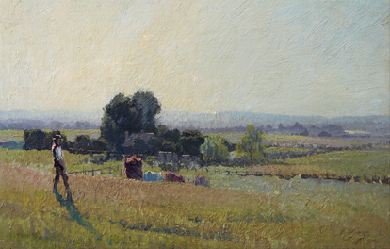
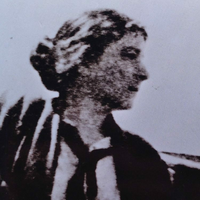
Lesbia Harford (1891–1927) was an Australian poet, novelist and political activist. Life Lesbia Venner Keogh was the first child of Edmund Joseph Keogh and Beatrice Eleanor Moore, great-great-granddaughter of an Earl of Drogheda. Lesbia was born at Brighton, Victoria, on 9 April 1891. From 1893 to 1900, the family lived at “Wangrabel”, 6 Horsburgh Grove, Armadale (the house still stands today). Her father left home for Western Australia when his real estate business failed about 1900. She and her three siblings were raised by their mother, who took genteel jobs, begged handouts from Keogh relations and took in boarders. Lesbia was educated at the Sacré Cœur School at “Clifton”, Malvern, Victoria; Mary’s Mount school at Ballarat, Victoria; and the University of Melbourne, where she graduated LL.B. in 1916. She was one of the university’s few women students and one of its few opponents of Australia’s part in the First World War. Her brother, Esmond Venner (Bill) Keogh (1895–1970), became a prominent medical administrator and cancer researcher. Lesbia advocated free love in human relations. She herself formed lifelong parallel attachments to both men and women, most notably to Katie Lush, philosophy tutor at Ormond College. Becoming interested in social questions, she worked in textile and clothing factories to gain first hand knowledge of the conditions under which women worked. She became state vice-president of the Federated Clothing and Allied Trades Union. She campaigned strongly against conscription in World War I. She was a friend of Norman Jeffrey and lover of Guido Baracchi, founding members of the Communist Party of Australia (but which she never joined). In Sydney Lesbia sang her poems to Guido as they crossed the harbour on the Manly ferry. In 1918 she moved to Sydney to campaign for the release of the Sydney Twelve, members of the Industrial Workers of the World (the Wobblies) arrested and charged with treason, arson, sedition and forgery. She worked in clothing factories and as a university coach. She was also for a time a Fairfax housemaid (glimpsed in the poem “Miss Mary Fairfax”). She married Patrick John (Pat) Harford, sometime soldier, clicker in his uncle’s Fitzroy boot factory and a fellow Wobbly, in 1920. They shared an interest in painting and aesthetics. He was feckless and alcoholic but Pat wasn’t Pat last night at all. He was the rain,— The Spring,— Young Dionysus, white and warm,— Lilac and everything. They returned to her mother’s boarding house in Elsternwick, Melbourne in the early Twenties. Pat worked for the post-impressionist painter William Frater and himself became a painter under Frater’s influence, later moving towards modernism and cubism. The Harfords had no children and were estranged in the last years of Lesbia’s life. Some writers claim they were divorced but there is no documentary evidence of it. In 1926 Lesbia completed her articles with a Melbourne law firm. Authors agree on her always-delicate health but not on the cause: a severe attack of rheumatic fever while a young child (Serle); tuberculosis (Lamb); born with a heart problem that prevented her blood oxygenating (Sparrow). She often had to walk slowly. Her lips were sometimes quite blue. She died aged 36 of lung and heart failure in St Vincent’s Hospital on 5 July 1927. Writing Harford had begun writing verse in 1910, and in May 1921 Birth, a small poetry magazine published at Melbourne, gave the whole of one number to a selection from her poems. Harford’s 59-page The Law Relating to Hire Purchase in Australia and New Zealand, “just written for the money it will bring”, was published in 1923. In 1927 three of her poems were included in Serle’s An Australasian Anthology. The critic H.M. Green wrote “She has written some of the best lyrics among today’s and certainly, I would say, the best love lyrics written out here.” Mrs Keogh thought Lesbia’s writing was “beautiful” and in 1939 was still trying to get her novel and more poems published. In 1941 a small volume (54 poems) of The Poems of Lesbia Harford, edited by Nettie Palmer for Melbourne University Press, “revealed a poet of originality and charm.” In 1985 a much larger selection of poems appeared, edited by Marjorie Pizer and Drusilla Modjeska with a long introduction by Modjeska, acknowledging that some of Harford’s sexual relations were with women and much of her love poetry was addressed to them. Les Murray published 86 of these poems and a page of biography in a 2005 anthology. Lehmann and Gray’s obese 2011 Australian poetry since 1788 prints only thirteen poems (given “as much space as Brennan”) but provides a scholarly and detailed critical biography. The biggest selection in print is Collected Poems, which has 250 poems, a two-page foreword by Les Murray and an eight-page introduction by the editor, Oliver Dennis. Harford wrote a long-lost 190-page novel, The Invaluable Mystery, eventually published in 1987 with a foreword by Helen Garner and an introduction by Richard Nile and Robert Darby. Papers For decades it was thought that “On her death her father took custody of her notebooks and they were lost when his shack was destroyed by fire” but this is now known to be false. All known Harford poems are in the exercise books in Folders 1–3 of the Marjorie Pizer Papers, Mitchell Library, NSW, MLMSS 7428. Another ten folders collect manuscripts, typescript, letters and photos relating mainly to publication of her work. The typescript of The Invaluable Mystery is in the National Archive of Australia, Canberra, Series A699, control 1958/3640, barcode 278433. Legacy The political rock band Redgum recorded part of Harford’s poem “Periodicity” set to music as “Women in Change” on their 1980 album Virgin Ground. In Melbourne, the Victorian Women Lawyers’ biennial Lesbia Harford Oration, given by an eminent speaker on an issue of importance for women, is named in her honour. In 1991, the Playbox Theatre Company Melbourne presented Earthly Paradise; a Picture of Lesbia Harford, by the playwright Darryl Emmerson. This play was also published by Currency Press, Sydney.
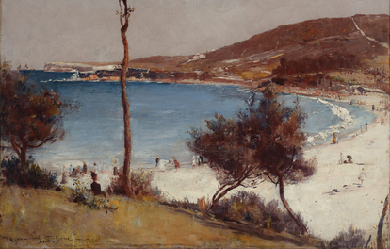
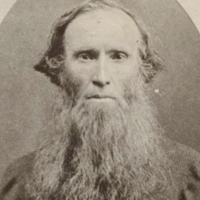
Charles Harpur (23 January 1813– 10 June 1868) was an Australian poet. He was born on 23 January 1813 at Windsor, New South Wales, the third child of Joseph Harpur—originally from Kinsale, County Cork, Ireland, parish clerk and master of the Windsor district school—and Sarah, née Chidley (from Somerset; both had been transported.) Harpur received his elementary education in Windsor. This was probably largely supplemented by private study; he was an eager reader of William Shakespeare. Harpur followed various avocations in the bush and for some years in his twenties held a clerical position at the post office in Sydney.

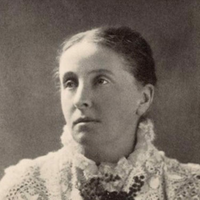
Ada Cambridge (21 November 1844 – 19 July 1926), later known as Ada Cross, was an English-born Australian writer. Overall she wrote more than twenty-five works of fiction, three volumes of poetry and two autobiographical works.[1] Many of her novels were serialised in Australian newspapers, and were never published in book form. While she was known to friends and family by her married name, Ada Cross, she was known to her newspaper readers as A.C.. Later in her career she reverted to her maiden name, Ada Cambridge, and it is thus by this name that she is known.[2] Ada was born at St Germans, Norfolk, the second child of Thomasine and Henry Cambridge, a gentleman farmer.[3] She was educated by governesses, an experience she abhorred. She wrote in a book of reminiscences: "I can truthfully affirm that I never learned anything which would now be considered worth learning until I had done with them all and started foraging for myself. I did have a few months of boarding-school at the end, and a very good school for its day it was, but it left no lasting impression on my mind." (The Retrospect, chap. IV). It was, in fact, an unmarried aunt who most contributed to her intellectual development.[4] On 25 April 1870 she was married to the Rev. George Frederick Cross and a few weeks later sailed for Australia. She arrived in Melbourne in August and was surprised to find it a well established city. Her husband was sent to Wangaratta, then to Yackandandah (1872), Ballan (1874), Coleraine (1877), Bendigo (1884) and Beechworth (1885), where they remained until 1893. Her Thirty Years in Australia (1903) describes their experiences in these parishes. She experienced her share of tragedy, including the loss of children to whooping cough and scarlet fever.[5] Cross at first was the typical hard-working wife of a country clergyman, taking part in all the activities of the parish and incidentally making her own children's clothes. Her health, however, broke down, for a number of reasons including a near-fatal miscarriage and a serious carriage accident, and her activities had to be reduced, but she continued to write. In 1893 Cross and her husband moved to their last parish, Williamstown, near Melbourne, and remained there until 1909. Her husband went on the retired clergy list at the end of 1909 with permission to operate in the diocese until 1912. In 1913 they both returned to England, where they stayed until his death on 27 February 1917. Ada returned to Australia later that year, and died in Melbourne on 19 July 1926. She was survived by a daughter and a son, Dr K. Stuart Cross. A street in the Canberra suburb of Cook is named in her honour. Career While Cambridge began writing in the 1870s to make money to help support her children, her formal published career spans from 1865 with Hymns on the Litany and The Two Surplices, to 1922 with an article 'Nightfall' in Atlantic Monthly.[6] According to Barton, her early works 'contain the seeds of her lifelong insistence on and pursuit of physical, spiritual and moral integrity as well as the interweaving of poetry and prose which was to typify her writing career'.[4] Cato[1] writes that 'some of her ideas were considered daring and even a little improper for a clergyman's wife. She touches on extramarital affairs and the physical bondage of wives'. In 1875 her first novel Up the Murray appeared in the Australasian but was not published separately, and it was not until 1890 with the publication of A Marked Man that her fame as a writer was established.[7] However, despite regular good reviews, there were many who discounted her because she did not write in the literary tradition of the time, one that was largely non-urban and masculine, that focused on survival against the harsh environment.[8] She was first president of the Women Writers Club and honorary life-member of the Lyceum Club of Melbourne, and had many friends in the literary world including Grace 'Jennings' Carmichael, Rolf Boldrewood, Ethel Turner, and George Robertson.[9] Ada Cambridge Prizes The Ada Cambridge Prizes were first awarded in 2005. There are now four prizes: The Ada Cambridge Biographical Prose Prize, Then Ada Cambridge Poetry Prize, The Young Adas Short Story Prize and the Young Adas Graphic Short Story Prize. These Prizes all carry a cash component and winners are announced at the Williamstown Literary Festival each year. Fill details can be found at www.willylitfest.org.au Novels The Two Surplices (1865) A Woman's Friendship (Serialised in the Age, 1889; first published in book form in 1988) My Guardian : A Story of the Fen Country (1874) Up the Murray (1875) In Two Years Time (1879) Dinah (1880) A Mere Chance (1880) Missed in the Crowd (1882) A Girl's Ideal (1882) Across the Grain (1882) The Three Miss Kings (1883) A Marriage Ceremony (1884) A Little Minx (1885) Against the Rules (1886) A Black Sheep (1889) A Woman's Friendship (1889) Not All in Vain (1891) Fidelis (1895) A Professional Beauty (1897) Materfamilias (1898) Path and Goal (1900) The Devastators (1901) Sisters (1904) A Platonic Friendship (1905) A Happy Marriage (1906) The Eternal Feminine (1907) The Making of Rachel Rowe (1914) Poetry collections Hymns on the Litany (1865) Hymns on the Holy Communion (1866) Echoes (1869) The Manor House and Other Poems (1875) Unspoken Thoughts (1887) The Hand in the Dark and Other Poems (1913) Short story collections[edit] The Vicar's Guest : A Tale (1869) At Midnight and Other Stories (1897) Children's fiction[edit] Little Jenny (1867) Autobiography Thirty Years in Australia (1903) The Retrospect (1912)
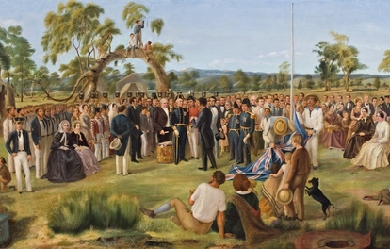
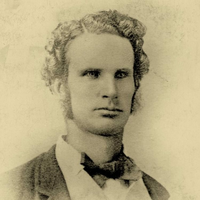
Adam Lindsay Gordon (19 October 1833 – 24 June 1870) was a British-Australian poet, horseman, police officer and politician. He was the first Australian poet to gain considerable recognition overseas, and according to his contemporary, writer Marcus Clarke, Gordon's work represented “the beginnings of a national school of Australian poetry”.
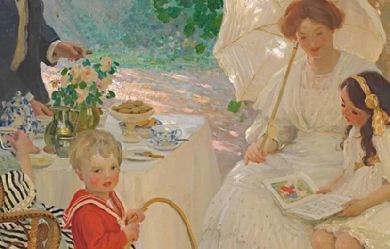
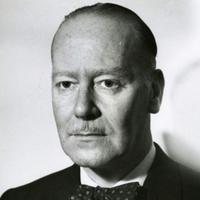
Kenneth Adolf Slessor OBE (27 March 1901– 30 June 1971) was an Australian poet, journalist and official War Correspondent in World War II. He was one of Australia’s leading poets, notable particularly for the absorption of modernist influences into Australian poetry. The Kenneth Slessor Prize for Poetry is named after him. Early life Slessor was born Kenneth Adolphe Schloesser in Orange, New South Wales. As a boy, he lived in England for a time with his parents and in Australia visited the mines of rural New South Wales with his father, a Jewish mining engineer whose father and grandfather had been distinguished musicians in Germany. His family moved to Sydney in 1903. Slessor attended Mowbray House School (1910–1914) and the Sydney Church of England Grammar School (1915–1918), where he began to write poetry. His first published poem was in 1917 about a digger in Europe, remembering Sydney and its icons. Slessor passed the 1918 NSW Leaving Certificate with first-class honours in English and joined the Sydney Sun as a journalist. In 1919, seven of his poems were published. He married for the first time in 1922. Career Slessor made his living as a newspaper journalist, mostly for the Sydney Sun, and was a war correspondent during World War II (1939–1945). Slessor counted Norman Lindsay, Hugh McCrae and Jack Lindsay among his friends. As the Australian Official War Correspondent during World War II, Slessor reported not only from Australia but from Greece, Syria, Libya, Egypt, and New Guinea. Slessor also wrote on rugby league football for the popular publication Smith’s Weekly. Poetry The bulk of Slessor’s poetic work was produced before the end of the Second World War. His poem “Five Bells”—relating to Sydney Harbour, time, the past, memory, and the death of the artist, friend and colleague of Slessor at Smith’s Weekly, Joe Lynch—remains probably his best known poem, followed by “Beach Burial”, a tribute to Australian troops who fought in World War II. In 1965, Australian writer Hal Porter wrote of having met and stayed with Slessor in the 1930s. He described Slessor as: ...a city lover, fastidious and excessively courteous, in those qualities resembles Baudelaire, as he does in being incapable of sentimentalizing over vegetation, in finding in nature something cruel, something bordering on effrontery. He prefers chiselled stone to the disorganization of grass. Awards In the New Year’s Honours of 1959, Slessor was appointed an Officer of the Order of the British Empire (OBE) for services to literature. Personal life At the age of 21, Slessor married 28-year-old Noëla Glasson in Ashfield, Sydney, on 18 August 1922. Noëla died of cancer on 22 October 1945. He married Pauline Wallace in 1951; and a year later celebrated the birth of his only child, Paul Slessor, before the marriage dissolved in 1961. Death He died alone and suddenly of a heart attack on 30 June 1971 at the Mater Misericordiae Hospital, North Sydney. Bibliography Poetry collections * Thief of the Moon, Sydney: Hand press of J. T. Kirtley (1924) * Earth-Visitors, London: Fanfrolico Press (1926) * Trio: a book of poems, with Harley Matthews and Colin Simpson, Sydney: Sunnybrook Press (1931) * Cuckooz Contrey, Sydney: Frank Johnson (1932) * Darlinghurst Nights: and Morning glories: being 47 strange sights, Sydney (1933) * Funny Farmyard: Nursery Rhymes and Painting Book, with drawings by Sydney Miller, Sydney: Frank Johnson (1933) * Five Bells: XX Poems, Sydney: F.C. Johnson (1939) * One Hundred Poems, 1919–1939, Sydney: Angus & Robertson (1944) * “Beach Burial” 1944 * “The Night Ride” * “Sleep” * “Out of Time” 1930 Essays/prose * Bread and Wine, Sydney, Angus & Robertson (1970) Edited * Australian Poetry (1945) * The Penguin Book of Modern Australian Verse (Melbourne, 1961) Recognition Slessor has a street in the Canberra suburb of McKellar named after him. The bells motif in “Five Bells” is referenced at the end of the 1999 song “You Gotta Love This City” by The Whitlams, which also involves a drowning death in Sydney Harbour. Slessor’s poetry was chosen to be placed on the Higher School Certificate English reading lists, and was also examined in the final English exam. References Wikipedia—https://en.wikipedia.org/wiki/Kenneth_Slessor
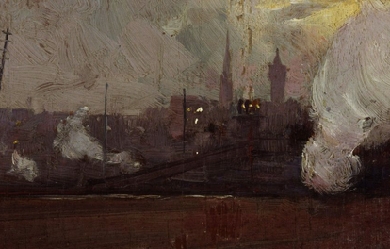
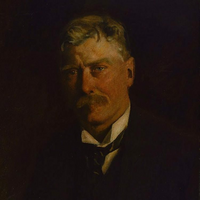
Roderic Quinn (26 November 1867– 15 August 1949) was an Australian poet. Early life Quinn was the seventh child of Irish parents Edward Quinn, letter-carrier, and his wife Catherine. He was educated at Catholic schools where he met and formed life-long friendships with Christopher Brennan and E. J. Brady. Following school he studied law irregularly and taught for six months at Milbrulong Provisional Public School, near Wagga Wagga. After a short stint back in Sydney as a public servant he became editor of the North Sydney News. Career Quinn began publishing his poetry in The Bulletin during the 1890s and continued to do so for the rest of his life, writing over 1200 individual pieces in all. He published a novel, Mostyn Stayne in 1897, but it was not successful. He wrote a number of short stories during his career but does not appear to have returned to the novel length in his fiction. However it was poetry that was his first calling, and The Bulletin was his primary vehicle of publication. “In later days Quinn would turn up at The Bulletin each week with something which was called 'Rod Quinn’s rent poem’ which was bought but not often published.” Quinn was a leading member of the Dawn and Dusk Club in the 1890s, although in contrast to the club’s boisterous reputation he “had an air of courteous deference and a fine sense of humour.” He never married and supported himself from his writing. He died in Darlinghurst in 1949. He was the brother of Patrick Quinn and uncle of the writer Marjorie Quinn. Reviews Norman Lindsay observed: “Listening was his distinguished characteristic. He was a very tall man, so that with men of average height he had to bend a little to be on equal terms, and this bending gave him the air of couteous deference. the courtesy was genuine. he was a kindly man, for I never heard him say anything depreciative of others, either their works of their personalities.” Of his verse, The Western Mail referred to his “poetic genius” and stated that he “occupies a high place amongst lyricists of the Commonwealth”. Norman Lindsay summed up his work as follows: “That Rod was what he was defines the small place his poetry takes in this country’s literary tradition.” Novels Mostyn Stayne (1897) Collections The Hidden Tide (1899) The Circling Hearths (1901) A Southern Garland (1904) Poems (1920) References Wikipedia—https://en.wikipedia.org/wiki/Roderic_Quinn
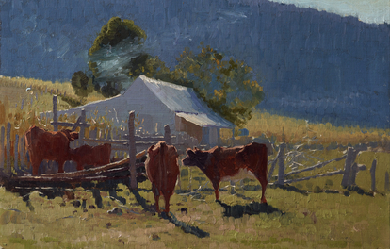
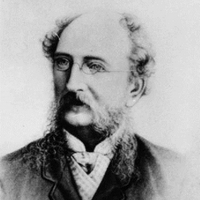
James Brunton Stephens (17 June 1835– 29 June 1902) was a Scottish-born Australian poet, author of Convict Once. Born at Borrowstounness, on the Firth of Forth, Scotland; the son of John Stephens, the parish schoolmaster, and his wife Jane, née Brunton. J. B. Stephens was educated at his father’s school, then at a free boarding school and at the University of Edinburgh from 1849 to 1854 without obtaining a degree. For three years he was a travelling tutor on the continent, and from 1859 became a school teacher in Scotland. While teaching at Greenock Academy, Stephens wrote some minor verse and two short novels ('Rutson Morley’ and 'Virtue Le Moyne’) which were published in Sharpe’s London Magazine in 1861-63.
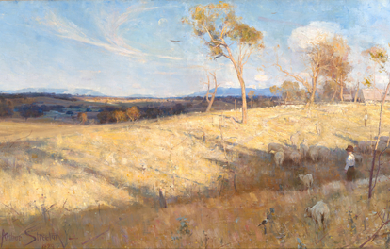
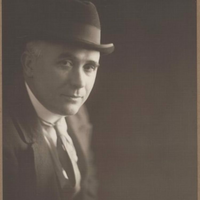
Edward George Dyson (4 March 1865– 22 August 1931) was an Australian journalist, poet, playwright and short story writer. He was the elder brother of talented illustrators Will Dyson and Ambrose Dyson. At 19, he began writing verse and, a few years later, embarked on a life of freelance journalism which lasted until his death. In 1896 he published a volume of poems, Rhymes from the Mines and, in 1898, the first collection of his short stories, Below and On Top.
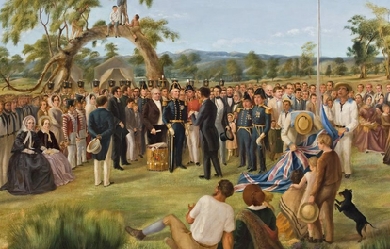
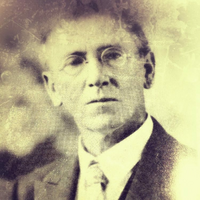
John Shaw Neilson (22 February 1872– 12 May 1942) was an Australian poet. Slightly built, for most of his life he worked as a labourer, fruit-picking, clearing scrub, navvying and working in quarries, and, after 1928, working as a messenger with the Country Roads Board in Melbourne. Largely untrained and only basically educated, Neilson became known as one of Australia’s finest lyric poets, who wrote a great deal about the natural world, and the beauty in it. Early life Neilson was born in Penola, South Australia of purely Scottish ancestry. His grandparents were John Neilson and Jessie MacFarlane of Cupar, Neil Mackinnon of Skye, and Margaret Stuart of Greenock. His mother, Margaret MacKinnon, was born at Dartmoor, Victoria, his father, John Neilson, at Stranraer, Scotland, in 1844. John Neilson senior was brought to South Australia at nine years of age, had practically no education and was a shepherd, shearer, and small farmer all his life. He never had enough money to get good land, and like other pioneers he fought drought and rabbits and other pests, receiving little reward for his labours. He died in 1922 having lived just long enough to see his son accepted as an Australian poet. He himself had written verses; one song, Waiting for the Rain, was popular in the shearing sheds, and in January 1893 he wrote the senior prize poem, The Pioneers, for the literary competition held by the Australian Natives’ Association. In 1938 a small collection of his poems, The Men of the Fifties, was published by the Hawthorn Press at Melbourne. John Shaw Neilson had little more education than his father. When about eight years old he was for 15 months at the state school at Penola, but he had to leave in 1881 when the family removed to Minimay in the south-west Wimmera in Victoria. There was no school at Minimay then, but four years later one was opened and Neilson attended for another 15 months. There was, however, a Bible and a tattered copy of Robert Burns’ poems in the house, and when at the age of 15 a copy of Thomas Hood’s poems came in his way, Neilson read them all with great joy. Driven out by drought, Neilson’s father took his family to Nhill in 1889, and was employed as a farm worker and on the roads. His son soon after began to write verses of which some appeared in the local press and one in The Australasian in Melbourne. Poetry In January 1893 John Shaw Neilson won the junior prize for a poem at the Australian Natives’ Association’s competition, in the same year that his father won the senior prize. In 1895 he went with his father to Sea Lake, and about a year later had some verses accepted by The Bulletin in Sydney. But his health broke down and he did little writing for about four years. He was contributing to the Bulletin between 1901 and 1906, and about 1908 some of his verses, mostly of a light or popular kind, were accepted by Randolph Bedford for the Clarion. From about 1906 Neilson’s sight began to fail, for the rest of his life he was able to do little reading, and most of his work was dictated. When the Bookfellow was revived in 1911 Neilson was a contributor, and Alfred George Stephens the editor, began collecting the best of his poems, intending to issue them in a volume under the title of Green Days and Cherries; Fred John’s Annual for 1913 included Neilson as the author of this volume. It was, however, delayed; World War I delayed it further; and it was not issued until 1919, when the title Heart of Spring was adopted. It had a laudatory preface by Stephens which stated that some of the work was “unsurpassed in the range of English lyrics”. It was well received, and in 1923, with the help of Mrs Louise Dyer, another volume, Ballad and Lyrical Poems, was published. This included nearly all the work in the first volume with some 20 additional lyrics. About this time Neilson visited Melbourne and met many of the literary people of the period. Now in his 50s and not a robust man he was beginning to feel the strain of physical work. “I don’t mind some kinds of pick and shovel work,” he said to Percival Serle, “but when I have to throw heavy stuff over my shoulder it gives me rather a wrench.” He may have been referring to the time he spent in the Heyfield area, where he wrote several poems and helped in the construction of the Lake Glenmaggie weir wall. In 1925 and again in 1926, Alfred Stephens suggested in newspaper articles that more suitable employment should be found for him. The difficulty was that Neilson’s poor eyesight unfitted him for most kinds of work. However, a movement began in Melbourne to help him and he was granted a small literary pension; and eventually in 1928 a position was found for him as an attendant in the office of the Victorian Country Roads Board. This office was in the Exhibition Gardens, Melbourne, and in these pleasant surroundings Neilson spent his days until near the end of his life. A volume, New Poems, was published in 1927, and in 1934 his Collected Poems appeared. Four years later another small volume was published, Beauty Imposes. A number of Neilson’s poems were set to music by composers such as Margaret Sutherland, Alfred Hill, Cathie O’Sullivan, Richard Keam and Darryl Emmerson. The latter’s play, The Pathfinder, based on the life and writings of Neilson, enjoyed much success in the 1980s, toured twice, was produced for radio by the Australian Broadcasting Commission, and published by Currency Press, Sydney, in 1987. In 2012 an updated and expanded compilation of Neilson’s Collected Poems, edited by Margaret Roberts, was published by University of Western Australia Press. Death Neilson retired from the Country Roads Board early in 1941, and went to Queensland to stay with friends. His literary pension was now increased to £2 a week. Soon after his return to Melbourne his health began to fail, and he died at a private hospital on 12 May 1942. He was buried in the Footscray Cemetery near Melbourne. Legacy In 1946 a bronze sculpture of the poet was commissioned for the opening of the Footscray Children’s Library in Buckley Street. The sculpture, by Wallace Anderson, is still on display at the Footscray Library in Paisley Street. The Maribyrnong Library Service, who now run the Footscray Library, holds an archive, the John Shaw Neilson Collection. There is also a local John Shaw Neilson Society. In 1964 the Nhill and District Historical Society erected a monument to Neilson. In 1972 the cottage birthplace of Neilson was relocated from Penola to a park in Nhill, as the John Shaw Neilson National Memorial Cottage. Since 1970 the Fellowship of Australian Writers has presented an annual award, the FAW John Shaw Neilson Poetry Award, for unpublished poems of at least 14 lines. Since 2005 the Penola Coonawarra Arts Festival have hosted the John Shaw Neilson Art Prize, for visual works inspired by the poet. Despite Melbourne’s strong literary tradition, there are no Melbourne suburbs named after writers. There was a campaign in 2009 to name a new suburb after Neilson. Works * Old Granny Sullivan, (poems), Sydney, Bookfellow, 1915. * Heart of Spring, (poems), Sydney, Bookfellow, 1919. * Ballad and Lyrical Poems, Sydney, Bookfellow, 1923. * New Poems, Sydney, Bookfellow, 1927. * Collected Poems of John Shaw Neilson, edited and with introduction by R. H. Croll, Melbourne, Lothian, 1934. * Beauty Imposes: Some Recent Verse, Angus and Robertson, 1938. * Unpublished Poems, edited by James Devaney, Angus and Robertson, 1947. * Shaw Neilson: poetry selections, selected and introduced by Judith Wright, Angus and Robertson, 1963. * The Poems of Shaw Neilson, edited and introduction by A. R. Chisholm, Angus and Robertson, 1965, revised edition, 1973. * Witnesses of Spring, edited by Judith Wright and Val Vallis, Angus and Robertson, 1970. * Selected Poems, edited by A. R. Chisholm, Angus and Robertson, 1976. * Green Days and Cherries: The Early Verse of Shaw Neilson, edited by Hugh Anderson and Leslie James Blake, Red Rooster Press, 1981. * Some Poems of John Shaw Neilson: Selected and With Wood-Engravings, Canberra, Brindabella Press, 1984. * John Shaw Neilson: Poetry, Autobiography, and Correspondence, edited by Cliff Hanna, University of Queensland Press, 1991. * Selected Poems, edited by Robert Gray, Angus and Robertson, 1991. * The Sun Is Up: Selected Poems, Loch Haven Books, 1991. * Collected Verse of John Shaw Neilson, edited by Margaret Roberts, University of Western Australia Publishing, 2012. * Collected Poems of John Shaw Neilson, edited by Robert Dixon, Sydney University Press, 2013 Biographies * John Shaw Neilson: a memorial, J. Roy Stevens, Bread and Cheese Club, 1942 * Shaw Neilson, James Devaney, Angus and Robertson, 1944 * Shaw Neilson, H.J. Oliver, Oxford University Press, 1968 * John Shaw Neilson, Hugh Anderson and L.J. Blake, Rigby, 1972 * The Autobiography of John Shaw Neilson, introduced by Nancy Keesing, National Library of Australia, 1978 * The Pathfinder, Darryl Emmerson, Currency Press, 1987 * Poet of the Colours: The Life of John Shaw Neilson, John H. Phillips, Allen and Unwin, 1988 * The Folly of Spring: A Study of John Shaw Neilson’s Poetry, Cliff Hanna, University of Queensland Press, 1990 * John Shaw Neilson: Poetry, Autobiography and Correspondence, edited by Cliff Hanna, University of Queensland Press, 1991 * Jock: A Life Story of John Shaw Neilson, Cliff Hanna, University of Queensland Press, 1999 * John Shaw Neilson: A Life in Letters, Helen Hewson, Melbourne University Press, 2001 References Wikipedia—https://en.wikipedia.org/wiki/Shaw_Neilson
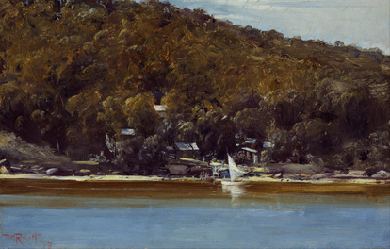
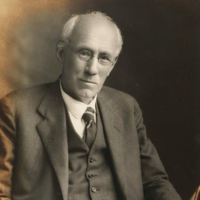
John Le Gay Brereton (2 September 1871– 2 February 1933) was an Australian poet, critic and professor of English at the University of Sydney. He was the first president of the Fellowship of Australian Writers when it was formed in Sydney in 1928. Brereton was born in Sydney, the fifth son of John Le Gay Brereton (1827-1886), a well-known Sydney physician who published five volumes of verse between 1857 and 1887, and his wife Mary, née Tongue. The younger Brereton was educated at Sydney Grammar School from 1881 and the University of Sydney where he graduated BA (1894), reading English under Professor Sir Mungo MacCallum. He was editor of Hermes, the student literary annual, and became the university’s chief librarian in 1915.
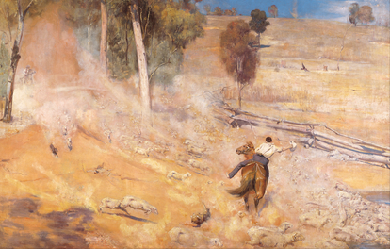
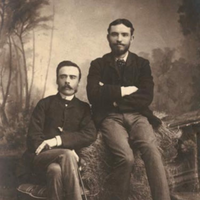
Victor James William Patrick Daley (5 September 1858– 29 December 1905) was an Australian poet. He was born at the Navan, County Armagh, Ireland, and was educated at the Christian Brothers at Devonport in England. He arrived in Australia in 1878, and became a freelance journalist and writer in both Melbourne and Sydney. Whilst in Melbourne, he met and became a friend of Marcus Clarke; later, in Sydney, he became acquainted with Henry Kendall. He is notable for becoming the first author in Australia who tried to earn a living from writing alone. In Sydney in 1898, he founded the bohemian Dawn and Dusk Club, which had many notable members such as writer Henry Lawson. He died at Sydney of tuberculosis.
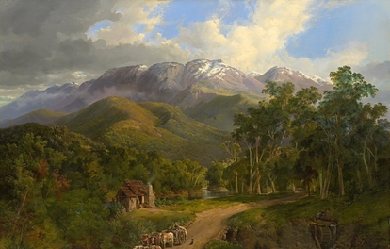
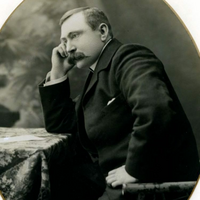
George Essex Evans (18 June 1863– 10 November 1909) was an Australian poet. Evans suffered from increasing deafness as he grew older, and this may be the reason why he was thought to be a secretive, quiet man. Initially he earned a living by working as a teacher at a private school, but eventually became an Agricultural Editor of The Queenslander.
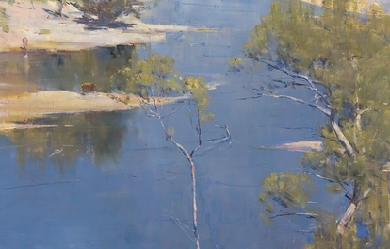
Alice Guerin Crist (1876–1941) was an Australian poet, author and journalist born in Clare Castle, Ireland on 6 February 1876 to Patrick and Winifred (née Rohan or Rouhan) Guerin. When she was two years old, the family migrated to Queensland, where her father taught in rural schools, including as head teacher of Tent Hill Upper school in May 1880.
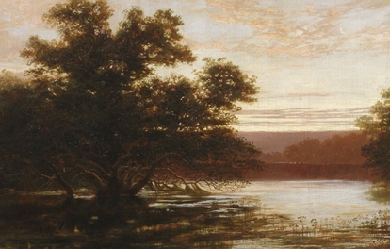
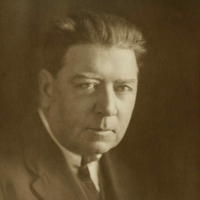
Christopher John Brennan (1 November 1870– 5 October 1932) was an Australian poet and scholar. Biography Brennan was born in Sydney, to Christopher Brennan (d. 1919), a brewer, and his wife Mary Ann née Carroll (d. 1924), both Irish immigrants. His education took place at two schools in Sydney: he first attended St Aloysius’ College, and after gaining a scholarship from Patrick Moran, he boarded at St Ignatius’ College, Riverview. Brennan entered the University of Sydney in 1888, taking up studies in the Classics, and won a travelling scholarship to Berlin. There he met his future wife, Anna Elisabeth Werth; there, also, he encountered the poetry of Stéphane Mallarmé. About this time, he decided to become a poet. In 1893 Brennan’s article “On the Manuscripts of Aeschylus” appeared in the Journal of Philology, Brennan began forming a theory about the descent of Aeschylus’ extant manuscripts in 1888. Returning to Australia, Brennan took up a position as a cataloguer in the public library, before being given a position at the University of Sydney. In 1914, he produced his major work, Poems: 1913. After Brennan’s marriage broke up in 1922, he went to live with Violet Singer, the 'Vie’ of his later poems, and, as a result of both his divorce and increasing drunkenness, he was removed from his position at the University in June 1925. The death of Singer in an accident left him distraught, and he spent most of his remaining years in poverty. Brennan died in 1932 from cancer. Legacy Brennan influenced Australian writers of his own generation and many who succeeded him, including R. D. Fitzgerald, A.D. Hope, Judith Wright and James McAuley. In remembrance, the Fellowship of Australian Writers established the Christopher Brennan Award which is presented annually to an Australian poet, recognising a lifetime achievement in poetry. Brennan Hall and Library at St John’s College within the University of Sydney, the Christopher Brennan building in the University’s Arts Faculty, and the main library at Saint Ignatius’ College, Riverview are named in his honour. Bibliography * Sir Roger de Coverley, Selections from The Spectator (Sydney: Turner and Henderson, 1892). Edited with: A. B. Piddington. * XVIII Poems: Being the First Collection of Verse and Prose (Sydney: privately stylographed, 1897). * XXI Poems: MDCCCXCIII-MDCCCXCVII: Towards the Source (Sydney: Angus and Robertson, 1897). * Fact and Idea (Sydney: Govt. Printer, 1899). * From Blake to Arnold: Selections from English Poetry, 1783–1853 (London: Macmillan, 1900). Edited with: J. P. Pickburn & J. Le Gay Brereton. * A Mask (Sydney: Sydney U. Women’s College, 1913). With: J. Le Gay Brereton. * Poems (Sydney: G. B. Philip and Son, 1914). * Passages for Translation into French and German (London: Oxford University Press, 1914). Compiled with: G. G. Nicholson. * A Chant of Doom: and Other Verses (Sydney: Angus and Robertson, 1918). * Twenty Three Poems (Sydney: Australian Limited Editions Society, 1938). * The Burden of Tyre (Sydney: Harry F. Chaplin, 1953). * The Verse of Christopher Brennan ed. by A. R. Chisholm and J. J. Quinn (Sydney: Angus and Robertson, 1960). * The Prose of Christopher Brennan ed. by A. R. Chisholm and J. J. Quinn (Sydney: Angus and Robertson, 1962). * Selected Poems of Christopher Brennan (Sydney: Angus and Robertson, 1965). Ed. by: A. R. Chisholm. * Selected Poems of Christopher Brennan (Sydney: Angus and Robertson, 1973). Ed. by: G. A. Wilkes. * Prose-Verse-Poster-Algebraic-Symbolico-Riddle Musicopoematographoscope & Pocket Musicopoematographoscope (Erskineville, NSW: Hale and Iremonger, 1981). Ed. by: Axel Clark. * Christopher Brennan ed. by Terry Sturm (St. Lucia, Qld: U. of Queensland Press, 1984). * 13 Poems (Pearl Beach, NSW: Escutcheon Press, 1987). Ed. by: R. E. Summers. * Interludes: Six Poems (Pearl Beach, NSW: Escutcheon Press, 1991). * Christopher Brennan: Introduction suivie de 12 poèmes– textes et traductions– avec commentaires ([S.l.]: L’Harmattan, 2005). Ed. and trans.: Simone Kadi. * The Autumnal Glory of Valvins: Christopher Brennan on Mallarmé (Banora Point: Wind and Wave Press, 2007). Ed. by: Phillip A. Ellis. * Like a Dream of Stone: Selected Verse Translations by Christopher Brennan (Banora Point: Wind and Wave Press, 2007). Ed. by: Phillip A. Ellis. References Wikipedia—https://en.wikipedia.org/wiki/Christopher_Brennan
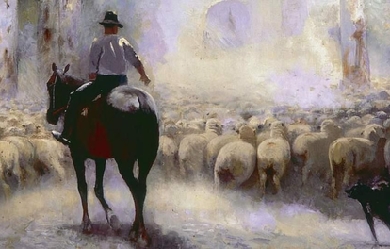
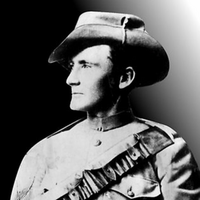
Harry “Breaker” Harbord Morant (9 December 1864– 27 February 1902) was an Anglo-Australian drover, horseman, bush poet, and military officer. While serving with the Bushveldt Carbineers during the Second Anglo-Boer War, Captain Morant was arrested and court-martialed for war crimes– one of the first such prosecutions in British military history. According to military prosecutors, Morant had retaliated for the death in combat of a fellow officer with the summary execution of nine Afrikaner prisoners-of-war. He was found guilty and sentenced to death. Captain Morant was then court-martialed for the murder of a Lutheran minister, Rev. Daniel Heese. The German Heese had witnessed the POW massacre, indignantly vowed to inform Morant’s commanding officer, and had been shot to death on the way to the British Army HQ at Pietersburg. Morant was acquitted of the Heese murder, but his sentence for the killing of the Boers was carried out by a firing squad drawn from the Queen’s Own Cameron Highlanders on 27 February 1902. Despite having left a written confession in his cell, Harry Morant has become a folk hero in modern Australia. His court-martial and death have been the subject of books, a stage play, and an award-winning Australian New Wave film adaptation by director Bruce Beresford. Many now regard Morant as a scapegoat or even as the victim of a judicial murder. Beresford has expressed regret that his film has contributed to this belief: “The film never pretended for a moment that they weren’t guilty. It said they are guilty. But what was interesting about it was that it analysed why men in this situation would behave as they had never behaved before in their lives. It’s the pressures that are put to bear on people in war time... Look at all the things that happen in these countries committed by people who appear to be quite normal. That was what I was interested in examining. I always get amazed when people say to me that this is a film about poor Australians who were framed by the Brits.” Early life It appears that Morant created a number of romantic legends about his past. He was often described as “well-educated” and claimed to have been born in 1865 at Bideford, Devon, England, and to have been the illegitimate son of Admiral Sir George Digby Morant of the Royal Navy; a claim repeated as fact by later writers, although the admiral denied it. It is alleged that Morant entrusted his cigarette case and other personal belongings to Major Bolton, who appeared for the prosecution during his courts-martial with the words “see that my family gets them”. Years later, when Bolton’s daughter allegedly tried to hand them to the family of Sir George, she was told Morant was not related to them. It has been suggested that the young Morant came into the care of a wealthy Scottish author, soldier, hunt-master and golfer, George Whyte-Melville. Like other stories there is no evidence for this theory. The results of enquiries made in 1902 by both The Northern Miner and The Bulletin newspapers identified him as Edwin Henry Murrant who had arrived at Townsville in Queensland on the SS Waroonga in 1883. Murrant was born at Bridgwater in Somerset, England, in December 1864, the son of Edwin Murrant and Catherine (née Riely). Edwin and Catherine were Master and Matron of the Union Workhouse at Bridgewater and after Edwin died in August 1864, four months before the birth of his son, Catherine continued her employment as Matron until her retirement in 1882. She died in 1899 when Morant was in Adelaide, South Australia, preparing to leave for South Africa. Morant settled in outback Queensland, and over the next 15 years, working in Queensland, New South Wales and South Australia, the charismatic roustabout made a name for himself as a hard-drinking, womanising bush poet and gained renown as a fearless and expert horseman. Harry Breaker Morant was one of the few horsemen who managed to ride the notorious buckjumper Dargin’s Grey in a battle that became a roughriding legend. Morant worked in a variety of occupations; he reportedly traded in horses in Charters Towers, then worked for a time on a newspaper at Hughenden in 1884, but there are suggestions that he left both towns as a result of debts. He then drifted around for some time until he found work as a bookkeeper and storeman on the Esmaralda cattle station. On 13 March 1884, Morant married Daisy May O’Dwyer, who later became famous as an anthropologist. The Morants separated soon after and never formally divorced; Daisy reportedly threw him out after he failed to pay for the wedding and then stole some pigs and a saddle. He then worked for several years as an itinerant drover and horse-breaker, as well as writing his popular bush ballads, becoming friendly with famed Australian bush poets Henry Lawson, Banjo Paterson and William Ogilvie. Military career At the time Morant volunteered for military service (in 1899), the formal federation of the Commonwealth of Australia was still two years away. Australia consisted of separate self-governing colonies, each of which was still subject to the British Crown. The population still included many British immigrants, and most Australians still had strong ties to “The Mother Country”. Consequently, thousands of Australian men volunteered to fight for Britain in the Second Boer War, which pitted British colonial forces against the Boer Republics in South Africa. Evidently, seeing this as a chance to return to England and redeem himself in the eyes of the family he had left 16 years before, Morant enlisted with the Second Contingent of the South Australian Mounted Rifles. While in Adelaide, Morant was reportedly invited to visit the summer residence of the South Australian governor, Lord Tennyson. After completing his training, he was appointed lance corporal and his regiment embarked for the Transvaal on 27 February 1900. In many respects, the terrain and climate of South Africa is remarkably similar to that of outback Australia, so Morant was in his element. His superb horsemanship, expert bush skills, and educated manner soon attracted the attention of his superiors. South Australian Colonel Joseph Gordon recommended him as a dispatch rider to Bennet Burleigh, the war correspondent of the London Daily Telegraph; the job reportedly provided the debonair Morant with ample opportunity to visit the nearby hospital and dally with the nurses. The statement of service Morant tendered at his trial is quoted, apparently verbatim, in the book written by his friend and colleague, George Witton. According to that account, Morant was commissioned as a lieutenant in the Bushveldt Carbineers (BVC) on 1 April 1901. Prior to that, he had served in the South Australian Second Contingent for nine months, during which time he was promoted to the rank of sergeant. Subsequently, he returned to Devon, England for a period of time. In March 1900, Morant carried dispatches for the Flying Column to Prieska, under Colonel Lowe, 7th D.G., who was in the general advance to Bloemfontein and took part in the engagements of Karee Siding and Kroonstadt, and other engagements with Lord Roberts until the entry into Pretoria. Morant was at Diamond Hill and was then attached to General French’s staff, Cavalry Brigade, as war correspondent with Bennet Burleigh of the London Daily Telegraph. He accompanied that column through Middelburg and Belfast to the occupation of Barberton. At this point, he took leave and returned to Devon, England for six months. Here he became close friends with Captain Hunt, and the two of them became engaged to a pair of sisters. Hunt, who was still “signed on”, returned to South Africa to take command of a squadron (?) in the Bushveldt Carbineers, whereas Morant (who had intended that his military service come to an end) followed him shortly after not having found the forgiveness he sought in England. Originally returning to take up a commission in Baden Powell’s Transvaal Constabulary, he was convinced by Hunt to instead accept a commission in the BVC. Boer guerrilla campaign, 1901–1902 Following their defeats on the battlefield during 1899–1900, the Boer Commandos embarked on a guerrilla campaign against both British and Commonwealth forces. In response, Lord Kitchener, the British commander in South Africa assembled and deployed a number of irregular regiments to combat Boer commando units and protect British interests in the region. On his return from leave, Morant joined one of these irregular units, the Bushveldt Carbineers, a 320-strong regiment that had been formed in February 1901 under the command of an Australian, Colonel R.W. Lenehan. Following his friend’s lead, Captain Hunt joined the BVC soon after. The regiment, based in Pietersburg, 180 miles (290 km) north of Pretoria, saw action in the Spelonken region of the Northern Transvaal during 1901–1902. The region was remote, wild and dangerous and was also in a heavily malarial area. Because of this, the British had difficulty in finding troops and as a result, many Commonwealth soldiers enlisted. About forty percent of the men in the BVC were Australians, but the regiment also included about forty surrendered Boers ("joiners") who had been recruited from the internment camps, and according to Witton, their presence was greatly resented by the Australians. The garrison was soon divided into two columns; one, under the command of Lieutenant Morant, operated in the Strydpoort district, about 30 miles (48 km) south-east of Pietersburg. BVC A Company moved north under the command of Captain James Huntley Robertson and established a command post at Sweetwaters Farm, about 90 miles (140 km) north of Pietersburg, which they renamed Fort Edward. The other ranking officer at the fort was Captain Alfred Taylor, an Anglo-Irish officer with the Army’s Intelligence Department. He had been selected and sent to Spelonken by Kitchener because of his knowledge of “the natives”. In his book, Witton wrote that as far as the Africans were concerned: On 2 July 1901, Captain Taylor received word that a group of six Boers were coming in to the fort, accompanied by two covered wagons and a large herd of cattle. In response, the Captain sent a runner to summon troops from the Bushveldt Carbineers. Upon their arrival, Cap. Taylor ordered a party under BVC Major K.C.B. Morrison to intercept the six Boers. He instructed him to “make it look like a fight”, ignore a white flag if one was flown, and take no prisoners. After listening, Maj. Morrison turned to Cap. Robertson and asked whether he should obey Taylor’s orders. Robertson replied, “Certainly, he is commanding officer at Spelonken.” In reality, while four of the Boer group were members of the Zoutpansberg Commando, all were unarmed, suffering from malaria, and on the way to the Swiss Mission Hospital at Valdezia. Upon being intercepted by Morrison’s patrol, all six Boers and the two Native African herdsmen accompanying them were shot in the heads and necks and left un-buried. The cash box, gold bars, and cattle they carried were seized by BVC Lt. Peter Handcock and never seen again. The victims’ known names were: Jan F. Vercuil, F.J.G. Potgieter, Jan J. Geyser, P.J. Geyser, J.C. Greyling, and M. van Heerden. Upon their return to Fort Edward, BVC Trooper B.J. van Buuren, an Afrikaner “joiner”, was seen pointing out the members of Maj. Morrison’s patrol to a group of Boer women and children who were being held for transport to the British concentration camp at Pietersburg. Believing that Trooper van Buuren had told the women in Afrikaans of the recent massacre, Capt. Robertson ordered Lt. Handcock to “attend to the matter”. On 4 July 1901, Lt. Handcock led a handpicked patrol of four men, including Trooper van Buuren, from Fort Edward to “investigate Boer activity close by”. In a subsequent deposition, Trooper M.A. Churton described having seen Lt. Handcock ride up behind Trooper van Buuren and shoot him three times in the back. Lt. Handcock then allegedly rode up to Trooper Churton and said, “Keep a sharp lookout. We just lost a man back there.” Meanwhile, news had reached military police in Pietersburg that a Spelonken woman had accused Capt. Robertson of sexual assault. In response, Robertson was recalled to HQ and given a choice between court martial and resigning his commission. He chose the latter option and left the British Armed Forces. Events leading to Morant’s arrest The exact sequence and nature of the events leading up to Morant’s arrest and trial are still disputed, and accounts vary considerably. While it seems clear that some members of the BVC were responsible for shooting Boer POWs and civilian noncombatants, the precise circumstances of these killings and the identities of those responsible will probably never be known for certain. The following account is drawn mainly from the only surviving eyewitness source, and the 1907 book Scapegoats of the Empire by Lieutenant George Witton, one of the three Australians sentenced to death for the alleged murders and the only one to escape execution. With Hunt now commanding the detachment at Fort Edward, discipline was immediately re-imposed by Lieutenant Morant and Lieutenant Handcock, but this was resisted by some. In one incident, several members of a supply convoy led by Lieutenant Picton looted the rum it was carrying, resulting in their arrest for insubordination and for threatening to shoot Picton. They escaped to Pietersburg, but Captain Hunt sent a report to Colonel Lenehan, who had them detained. When the matter was brought before Colonel Hall, the commandant of Pietersburg, he ordered the offenders to be discharged from the regiment and released. In his book, Witton explicitly accused these disaffected troopers of being responsible for “the monstrous and extravagant reports about the BVC which appeared later in the English and colonial press.” Back at Fort Edward, the seized livestock was collected and handed over to the proper authorities and the stills were broken up, but according to Witton, these actions were resented by the perpetrators, and as a result Morant and Handcock were “detested” by certain members of the detachment. Witton arrived at Fort Edward on 3 August with Sergeant Major Hammett and 30 men, and it was at this point that he met Morant and Handcock for the first time. Death of Captain Hunt The pivotal event of the Morant affair took place two days later, on the night of 5 August 1901. Captain Hunt led a 17-man patrol to a Boer farmhouse called Duivelskloof (Devil’s Gorge), about 80 miles (130 km) south of the fort, hoping to capture its owner, the Boer commando leader Veldtcornet Barend Viljoen. Hunt also had some 200 armed native African irregulars with him, and Witton claimed that although “those in authority” denied the use of African auxiliaries, they were in fact widely used and were responsible for “the most hideous atrocities”. Hunt had been told that Viljoen had only 20 men with him. The Boers surprised the British as they approached. During the ensuing skirmish, both Barend Viljoen and his brother Jacob Viljoen were killed. Witnesses later testified that Captain Hunt was wounded in the chest while firing through the windows and Sergeant Frank Eland was killed while trying to recover his body. Witnesses later testified that Hunt was still alive when the British retreated. When news of Hunt’s death reached the fort, it had a profound effect on Morant; Witton said he became “like a man demented”. Morant immediately ordered every available man out on patrol, broke down while addressing the men, and ordered them to avenge the death of their captain and “give no quarter”. Significantly, Morant did not see Hunt’s body himself; according to Witton, Morant arrived about an hour after the burial. He questioned the men about Hunt’s death and, convinced that his friend had been murdered in cold blood, he again vowed to give no quarter and take no prisoners. Witton recounted that Morant then declared that he had, on occasion, ignored Hunt’s order to this effect in the past, but that he would carry it out in the future. Retaliation The following day, after leaving a few men to guard the mission (which the Boers threatened to burn in reprisal for harbouring the British), Morant led his unit back to the Viljoen farm. It had been abandoned, so they tracked the retreating Boers all day, sighting them just on dusk. As the Australians closed in, the hot-headed Morant opened fire too early and they lost the element of surprise, so most of the Boers escaped. They did, however, capture one commando called Visser, wounded in the ankles so that he could not walk. The next morning, as Morant and his men continued their pursuit, a native runner brought a message that the lightly manned Fort Edward was in danger of being attacked by the Boers, so Morant decided to abandon the chase. At this point, he searched and questioned Visser and found items of British uniform, including a pair of trousers which he believed was that of Hunt’s, but was later proved to be of much older origin; he then told Witton and others that he would have Visser shot at the first opportunity. When they stopped to eat around 11 a.m. Morant again told Witton that he intended to have Visser shot, quoting orders “direct from headquarters” and citing Kitchener’s recent alleged “no prisoners” proclamation. He called for a firing party, and although some of the men initially objected, Visser was made to sit down on an embankment (he could not stand), and was shot. After being shot, Visser was still alive, and Morant ordered Picton to administer a coup-de-grace with pistol shots to the head. On the return journey to the fort, Morant’s unit stopped for the night at the store of a British trader, a Mr Hays, who was well known for his hospitality. After they left, Hays was raided by a party of Boers who looted everything he owned. When Morant and his men arrived back at Fort Edward, they learned that a convoy under Lieutenant Neel had arrived from Pietersburg the previous day, just in time to reinforce Captain Taylor against a strong Boer force that attacked the fort. During the encounter, one Carbineer was wounded and several horses were shot and it was at this time that Taylor had a native shot for refusing to give him information about the Boers’ movements. Neel and Picton then returned to Pietersburg. Other killings followed: on 23 August, Morant led a small patrol to intercept a group of eight prisoners from Viljoen’s commandos who were being brought in under guard; Morant ordered them to be taken to the side of the road and summarily shot. The South African born German missionary Reverend Predikant C.H.D. Heese spoke to the prisoners prior to the shooting. About a week later, reports began to circulate that Reverend Heese had been found shot along the Pietersburg road about 15 miles (24 km) from the fort on his way to Pietersburg to report the activities of Morant and his group to the British authorities. At his later court-martial, it was proved that Morant himself had shot Heese in an effort to prevent him from disclosing the murder of the Boer prisoners-of-war. Shortly afterwards, acting on a report that three armed Boer commandos were heading for the fort, Morant took Handcock and several other men to intercept them and after the Boers surrendered with a white flag, they were taken prisoner, disarmed and shot. Later the same day, Major Lenehan arrived at Fort Edward for a rare visit. Morant persuaded Lenehan to let him lead a strong patrol out to search for a small Boer unit led by Field-cornet Kelly, an Irish-Boer commando whose farm was in the district. Kelly had fought against the British in the main actions of the war, and after returning to his home he had become a commando rather than surrender. Morant’s patrol left Fort Edward on 16 September 1901 with orders from Lenehan that Kelly and his men were to be captured and brought back alive if possible. Covering 130 miles (210 km) in a week of hard riding, they left their horses 2 miles (3.2 km) from Kelly’s laager and went the rest of the way on foot. In the early hours of the next morning, Morant’s patrol charged the laager, this time taking the Boers completely by surprise; Morant himself arrested Kelly at gunpoint at the door of his tent. A week later, they returned to Fort Edward with the Kelly party and then escorted them safely to Pietersburg. The British commandant, Colonel Hall, personally sent Morant a message congratulating him on the success of his mission, after which Morant took two weeks leave. Arrests Then, in mid-October, the Spelonken detachment was suddenly recalled to Pietersburg and Fort Edward was abandoned until March 1902. On 24 October 1901, Colonel Hall ordered the arrest of six members of the Carbineers. Four were Australians: Major Lenehan and Lieutenants Handcock, Witton and Hannam; the other two, Captain Taylor and Lieutenant Picton, were English. When Morant returned from leave in Pietersburg, he too was arrested, although no charges were laid at the time. A Court of Enquiry into the affairs of the Bushveldt Carbineers followed. The War Office subsequently stated that, on 8 October 1901, some members of the BVC who had been discharged at Pietersburg on the expiration of their service had reported the irregular actions of the officers at Fort Edward over the preceding months. The men were held in solitary confinement within the garrison, in spite of vigorous protests by Lenehan; he even wrote directly to Kitchener to ask that he be allowed to inform the Australian government of his position, but Kitchener ignored the request. Meanwhile, the Court of Enquiry held daily hearings, taking evidence from witnesses about the conduct of the BVC. Two weeks later, the prisoners were finally informed of the charges against them; in December, they were again brought before the panel and told that they were to be tried by court-martial. The panel found that there were no charges to answer in the cases of Hannam and Sergeant Major Hammett. On hearing of the arrests, Kitchener’s Chief of Police, Provost Marshall Robert Poore, remarked in his diary, “... if they had wanted to shoot Boers they should not have taken them prisoner first”—a view later ruefully echoed in his book by George Witton. While it is certain that Morant and others did kill some prisoners, their real “mistake” in terms of their court-martial was that they killed the Boers after capturing and disarming them after they surrendered with a white flag. As Poore noted in his diary, had they shot them before they surrendered, the repercussions might well have been considerably less serious, since they could have claimed (truthfully or otherwise) that they had been killed in battle, rather than murdered after being taken prisoner. Just before the court-martial, Colonel Hall was removed from his post at Pietersburg and transferred to India. The BVC were disbanded and replaced by a new regiment called the Pietersburg Light Horse. On 15 January 1902, the accused were finally given copies of the charges against them and informed that they would be defended by Major James Francis Thomas (1861–1942), who in civilian life had been a solicitor in Tenterfield, New South Wales.[3][4] The court-martial began the following day. Court-martial The court-martial of Morant and his co-accused began on 16 January 1902 and was conducted in several stages. Two main hearings were conducted at Pietersburg in relatively relaxed conditions; one concerned the shooting of Visser, the other the “Eight Boers” case. A large number of depositions by members of the BVC were made, giving damning evidence against the accused. For example, a Trooper Thompson stated that, on the morning of the 23rd (1901), he saw a party of soldiers with eight Boers: “Morant gave orders, and the prisoners were taken off the road and shot, Handcock killing two with his revolver. Morant later told me that we had to play into his hands, or else they would know what to expect.” A Corporal Sharp said that he "would walk 100 miles barefoot to serve in a firing squad to shoot Morant and Handcock.” Soon after the second hearing, the prisoners were put in irons, taken to Pretoria under heavy guard and tried on the third main count, the killing of Reverend Heese. Although acquitted of killing Reverend Heese, Morant and his co-accused were quickly sentenced to death on the other two charges. Morant and Handcock were shot within days of sentencing, while Witton’s sentence was commuted to life imprisonment by Lord Kitchener. Kitchener personally signed Morant and Handcock’s death warrants. The Field Marshal was absent on tour when the executions took place. Execution During the day of 26 February, Morant and Handcock were visited by a distraught Major Thomas; Witton says that news of the impending execution had “almost driven him crazy”. Thomas then rushed off to find Kitchener and plead with him, but was informed by Colonel Kelly that the Commander-in-Chief was away and was not expected back for several days. Thomas pleaded with Kelly to have the executions stayed for a few days until he could appeal to the King, but was told that the sentences had already been referred to England—and confirmed—and that there was “not the slightest hope” of a reprieve; Morant and Handcock “must pay for what he did”. When asked if he wanted to see a clergyman, Morant replied indignantly, “No! I’m a Pagan!” On hearing this, Handcock asked, “What’s a Pagan?” and after hearing the explanation, declared “I’m a Pagan too!” As the afternoon wore on, all the prisoners could clearly hear the sound of coffins being built in the nearby workshop. At 16:00 hours, Witton was told he would be leaving for England at five the following morning. That night, Morant, Picton, Handcock and Witton had a last supper together; at Morant’s request, he and Handcock were allowed to spend their last night in the same cell. Morant spent most of the night writing and then penned a final sardonic verse, and a confession which read To the Rev. Canon Fisher Pretoria The night before we’re shot We shot the Boers who killed and mutilated our friend (the best mate I had on Earth) Harry Harbord Morant Peter Joseph Handcock At 05:00 hours on 27 February, Witton was taken away and was allowed to say a brief farewell to Morant and Handcock, but was only allowed to see them through the small gate in the cell door and clasped hands. Shortly before 06:00 hours, Morant and Handcock were led out of the fort at Pretoria to be executed by a firing squad from the Queen’s Own Cameron Highlanders. Both men refused to be blindfolded; Morant gave his cigarette case to the squad leader, and his last words were reported as: “Shoot straight, you bastards! Don’t make a mess of it!”. A contemporary report from The Argus on 3 April 1902, however, has his last words as “Take this thing (the blindfold) off”, and on its removal, “Be sure and make a good job of it!”. Witton wrote that he was by then at Pretoria railway station and heard the volley of shots that killed his comrades. However, Poore, who attended the execution, wrote in his diary that he put Witton and Lieutenant Picton on the train that left at 05:30 hours. Thus, Witton would have been several miles on the way to Cape Town when the execution occurred. Aftermath of the execution Due to British military censorship, reports of the trial and execution did not begin to appear in Australia until the end of March 1902. The Australian government and Lieutenant Handcock’s wife, who lived in Bathurst with their three children, only learned of Handcock and Morant’s death from the Australian newspapers weeks after their executions. After learning of his sentence, Lieutenant Witton arranged to send two telegrams, one to the Australian government representative in Pretoria and the other to a relative in Victoria, but despite assurances from the British, neither telegram was ever received. The Australian government demanded an explanation from Kitchener who, on 5 April 1902, sent a telegram to the Australian Governor-General, which was published completely in the Australian press. It reads as follows: “In reply to your telegram, Morant, Handcock and Witton were charged with twenty separate murders, including one of a German missionary who had witnessed other murders. Twelve of these murders were proved. From the evidence it appears that Morant was the originator of these crimes which Handcock carried out in cold-blooded manner. The murders were committed in the wildest parts of the Transvaal, known as Spelonken, about eighty miles north of Pretoria, on four separate dates namely July 2, August 11, August 23, and September 7. In one case, where eight Boer prisoners were murdered, it was alleged to have been done in a spirit of revenge for the ill treatment of one of their officers– Captain Hunt– who was killed in action. No such ill-treatment was proved. The prisoners were convicted after a most exhaustive trial, and were defended by counsel. There were, in my opinion, no extenuating circumstances. Lieutenant Witton was also convicted but I commuted the sentence to penal servitude for life, in consideration of his having been under the influence of Morant and Handcock. The proceedings have been sent home.” News of the executions excited considerable public interest in the UK and a summary of the trial was published in The Times on 18 April 1902, but the British government announced in the House of Commons that, in keeping with normal practice, the court-martial proceedings would not be made public. The official transcripts of the court-martial reportedly disappeared soon afterwards. The Treaty of Vereeniging was signed on 31 May 1902. George Witton was transported to naval detention quarters England and then to Lewes prison in Sussex. Some time later he was transferred to the prison at Portland, Dorset, and was released after serving twenty-eight months. His release was notified to the British House of Commons on 10 August 1904. On his release he returned to Australia and for a while lived in Lancefield, Victoria, where he wrote his controversial book about the Morant case. He published it in 1907 under the provocative title Scapegoats of the Empire. The book was reprinted in 1982 following the success of the 1980 film Breaker Morant. Witton died in Australia in 1942. Alfred Taylor became a Native Commissioner in Rhodesia and a Member of Parliament and died in 1941. Literature on Morant and conflicting theories about the case The story of Morant’s life, exploits, trial and execution have been examined in several books and numerous press and internet articles, but as noted above, each account varies very considerably from the other in both the facts presented and their interpretation. There are facts intermingled with fiction. The most important primary source, the official records of the court-martial, vanished following the trial and their location remains a mystery. A report on the case from Kitchener to the Australian Governor-General (published in the Australian press on 7 April 1902) quotes Kitchener as saying that “the proceedings have been sent home” [i.e. to England]. Whatever their actual fate, the transcripts have not been seen since the trial and evidently not even the Australian government was granted access to them. In the 'Afterword’ to the 1982 reprint of Witton’s book, G.A. Embleton states that “ .. the British authorities have been approached by many researchers eager to examine the transcripts thought to be held by the War Office. Invariably these requests have been met with denials that the documents exist or pronouncements to the effect that they cannot be released until the year 2002... It now appears that the papers never reached England... (it was) recently announced that the court-martial papers had been discovered in South Africa...” A comprehensive record of the trial of Morant and Handcock, complete with a large number of depositions by members of the BVC and other witnesses of the deeds of Morant and Handcock, appears in Arthur Davey’s “Breaker Morant and the Bushveldt Carbineers” (Van Riebeeck Society, Cape Town 1987). In 2012, South African historian Charles Leach published the book The Legend of Breaker Morant is DEAD and BURIED: A South African version of the Bushveldt Carbineers in the Zoutpansberg, May 1901– April 1902. Based upon extensive research, Leach had complete access to unpublished South African sources and the papers of the Viljoen and Heese families. Joe West, a British Bushveldt Carbineers researcher, wrote in response: “Charles Leach’s impressive research has revealed that the crimes of Morant and his associates were worse than originally thought. In today’s day and age Morant and Handcock plus several others would be arraigned before a War Crime Tribunal.” Primary sources In the absence of the original trial records, three primary sources remain. The first is the report of the trial printed in The Times in April 1902; the second is George Witton’s account of the events of 1901–02, contained in his book Scapegoats of the Empire. The third and most recent is a letter about the case, written by Witton to Major Thomas in 1929, which was kept secret at Witton’s request until 1970. In it, Witton suggests that although Handcock broke down and confessed to the crimes, he did so under duress. Other accounts Wilcox states the next important book in creating the Morant myth was Cutlack’s Breaker Morant (1962), a short book as much a cartoon version of reality as The Bulletin once presented. (Wilcox, p. 363.) Cutlack’s story, said Wilcox, was based on Witton’s Scapegoats and Frank Fox’s Breaker Morant. The 1976 book The Australians At The Boer War by Australian writer R.L. Wallace gives a concise and reasonably detailed account of Morant’s military career, trial and execution although it contains almost no information about Morant’s earlier life and omits a number of significant details contained in Witton’s account of the events leading up to Morant’s trial. However, Wallace was writing an overall account of the Australians’ role in South Africa, not the life of Morant, Handcock or Witton. The most widely known book is the best-selling Australian novel The Breaker by Kit Denton, first published in 1973 and inspired by Denton’s meeting and conversation with a Boer War veteran who had known Morant. Wilcox suggested this book is a follow-on from Cutlack’s book and helped establish the myth. (Wilcox, p. 363.) However, Denton claimed that Morant and Handcock were executed in Pietersburg and buried near that spot. This mistake appeared in his book as late as 1981 (7th edition, p. 268), and is a possible reason as to why there is confusion around the location of the execution, i.e. Pretoria or Pietersburg. Kenneth Ross’s 1978 highly successful and widely acclaimed play Breaker Morant: A Play in Two Acts (ISBN 0-7267-0997-2), was adapted by Ross and Bruce Beresford into Beresford’s 1980 film Breaker Morant. The film was nominated for the 1980 Academy Award for the screenplay adapted from another source. In 1988 in the small town of Burra, South Australia, where Bruce Beresford’s film 'Breaker Morant’ was shot, David Jennings organized a 'Retrial of Morant, Handcock and Witton’. The townsfolk staged the retrial and generated the imagination of people from all over the world. Archival material which had been gathering dust in attics flooded in. Although the three Justices of the Peace who presided over the 'Retrial’ found all three not guilty on the balance of probabilities that Kitchener had issued the orders to execute Boers in khaki only a diary extract from a deceased Australian Staff Officer on Kitchener’s staff indicated that he had verbally instructed Captain Hunt and the Bushveldt Carbineers to execute prisoners, especially those wearing khaki. Legacy Although it is generally accepted that Morant and/or others in his regiment were responsible for the deaths of a number of Boer commandos, historical opinion is still divided over the central questions of the case—how many Boers were killed, by whom were they killed, and on whose orders? In his book, Born to Fight, Speed has photos of a number of Canadian Scouts wearing black feathers (pp. 105 & 119.), a symbol that they would shoot any Boer captured under arms. Morant’s supporters, on the other hand, argue that he and Handcock were unfairly singled out for punishment even though many other British soldiers were known to have carried out summary executions of Boer prisoners. In their view, the two Australians were made scapegoats by the British, who were intent on concealing the existence of the “take no prisoners” policy against Boer insurgents—a policy which, they claim, had been promulgated by Kitchener himself. However, Hamish Paterson, a South African military historian and a member of the Military History Society, has pointed out that the Bushveldt Carbineers were a British Imperial unit, not an Australian one: technically, the two “Aussies” were British officers. A 2002 book promoted the “scapegoat” argument. It said that while Morant and the others probably committed some crimes and may well have deserved disciplinary action, there is now persuasive evidence from several sources to show that the Kitchener 'no prisoners’ order did indeed exist, that it was widely known among both the British and Australian troops and was carried out by many disparate units. It also asserted that the court-martial was fundamentally flawed in its procedures. The graves of Morant and Handcock were left unattended for many years, but after the release of Beresford’s film it became a popular place of pilgrimage for Australian tourists. In June 1998 the Australian Government spent $1,500 refurbishing the grave site with a new concrete slab. The marble cross which stood over the grave had been vandalised, as had many other gravestones nearby. A series of monuments now mark the locations of some of the incidents, including that of the night attack, and the site of the mass grave of eight burghers. Petition In 2002, a group of Australians travelled to South Africa and held a service at the Pretoria graveside to commemorate the execution on the morning of the 100th anniversary. The service was also attended by the Australian High Commissioner to South Africa. The group left a new marker on the grave. A petition to pardon Morant and Handcock was sent to Queen Elizabeth II in February 2010. The petition has been severely criticised in South Africa, specifically by descendants of the Viljoen brothers who were killed in the skirmish with Hunt and Eland, and the descendants of the family of Rev. Heese. Hamish Paterson states: "I don’t think they [the Australian supporters of a Morant pardon] have actually considered what Morant was convicted of. Let’s start off with the laws of war. If for example, we have a surrender. You want to surrender and I don’t accept your surrender, so I choose not to accept it, that I’m entitled to do. [...] However, the situation changes dramatically once I accept your surrender, then I must remove you from the battlefield to a POW camp and keep you safe. If, for example, Kitchener said, “take no prisoners,” that was very different from “shoot prisoners!” So Morant and Handcock made two very basic errors: Once you’ve accepted the surrender, you take them to the railway line and get them shipped off to Bermuda, or wherever. At that point, the sensible thing to do was to ship them off to a POW camp. The next error was to shoot these guys in front of a neutral witness, and then you kill the witness. These are a series of terrible errors of judgement. Because they killed a German missionary, the Kaiser (became) involved. [...] Technically, the two “Aussies” were British officers. The problem was you were dealing with an unstable set-up in the BVC . It had just been formed. I don’t see a regular Australian unit behaving that way. I rather suspect why no British guys were shot was that they were either regular army or militia, or yeomanry, all of which are very unlikely to actually shoot prisoners. I think no British were shot because they hadn’t made the mistake of shooting prisoners who’d already surrendered.” Jim Unkles, an Australian lawyer, submitted two petitions, one to Queen Elizabeth II, and the other to the House of Representatives Petitions Committee in October 2009 to review the convictions and sentences of Morant, Handcock and Witton. The petitions were referred to the British Crown by the Australian Attorney General. On Monday, 27 February 2012, in a speech delivered to the House of Representatives on the 110-year anniversary of the sentencing of the three men, Alex Hawke, the Member for Mitchell (NSW), described the case for the pardons as “strong and compelling”. In November 2010 a statement from the Ministry of Defence in the UK said that the appeal had been rejected. “After detailed historical and legal consideration, the Secretary of State has concluded that no new primary evidence has come to light which supports the petition to overturn the original courts-martial verdicts and sentences”, the statement said. The decision was supported by Australian military historian Craig Wilcox and by South African local historian Charles Leach, while Jim Unkles continues to campaign for a judicial inquiry. In October 2011 Robert McClelland claimed on ABC radio that the executed men had no legal representation at the Courts Martial. This is untrue since Major J.F. Thomas represented them. On 12 December 2011 Robert McClelland was replaced as Attorney General with Nicola Roxon. [5] On 9 May 2012, Nicola Roxon indicated that the Australian government would not be pursuing the issue further with the British, on the basis that there was no doubt that the three men had committed the killings for which they were convicted. The Australian government’s position is that pardons are only appropriate where an offender is both “morally and technically innocent” of the offence. Roxon also noted the seriousness of the offences involved, explaining that “I consider that seeking a pardon for these men could be rightly perceived as ‘glossing over’ very grave criminal acts.” [6] McClelland, who claims to have reviewed the case, for which no transcripts exist, has yet to provide reasons for his popular view that the Englishman Morant and Australians Handcock and Witton did not receive a fair trial. References Wikipedia—https://en.wikipedia.org/wiki/Breaker_Morant
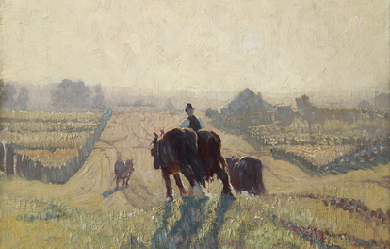
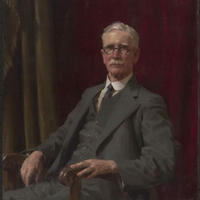
Bernard Patrick O’Dowd (11 April 1866– 1 September 1953) was an Australian activist, educator, poet, journalist, and author of several law books and poetry books, born in Beaufort, Victoria. O’Dowd worked as an assistant-librarian and later Chief Parliamentary Draughtsman in the Supreme Court at Melbourne for 48 years; he was also a co-publisher and writer for the radical paper Tocsin. Bernard O’Dowd lived to age 87.
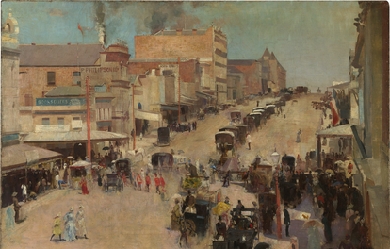
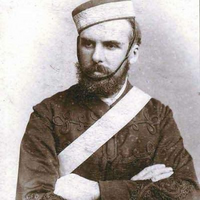
Barcroft Henry Thomas Boake (26 March 1866 – 2 May 1892) was an Australian poet. Born in Sydney, Boake worked as a surveyor and a boundary rider, but is best remembered for his poetry, a volume of which was published five years after his death. Boake is believed to have committed suicide. His body was found hanging by the neck from a stockwhip at Middle Harbour in Sydney eight days after he disappeared on 2 May 1892. One writer on Boake’s life has mentioned that the suicide took place during the 1891-93 depression when the poet was unable to find work, also noting that “it has been suggested that he killed himself for the love of one of the McKeahnie girls,” sisters of the horseman Charlie McKeahnie.
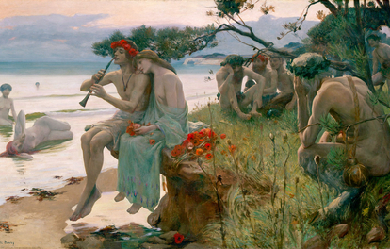
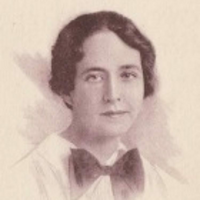
Zora Bernice May Cross (18 May 1890– 22 January 1964) was an Australian poet, novelist and journalist. She was born on May 18, 1890 on Eagle Farm, Brisbane to Earnest William Cross and Mary Louisa Eliza Ann. Her father was a Sydney born accountant. Cross inherited her love for literature from both her parents, poetry from her mother and Celtic knowledge from her father, who was also the son of an Irish printer. and was educated at Ipswich Girls’ Grammar School and then Sydney Teachers’ College from 1909 to 1910. She taught for three years and then worked as a journalist, for the Boomerang and then as a freelance writer. On March 11, 1911, she married Stuart Smith but later refused to live with him. This led to her marriage being dissolved on September 10, 1922. Later on in her life, Cross had a “de facto” husband, David McKee Wright, who she had two daughters with.


